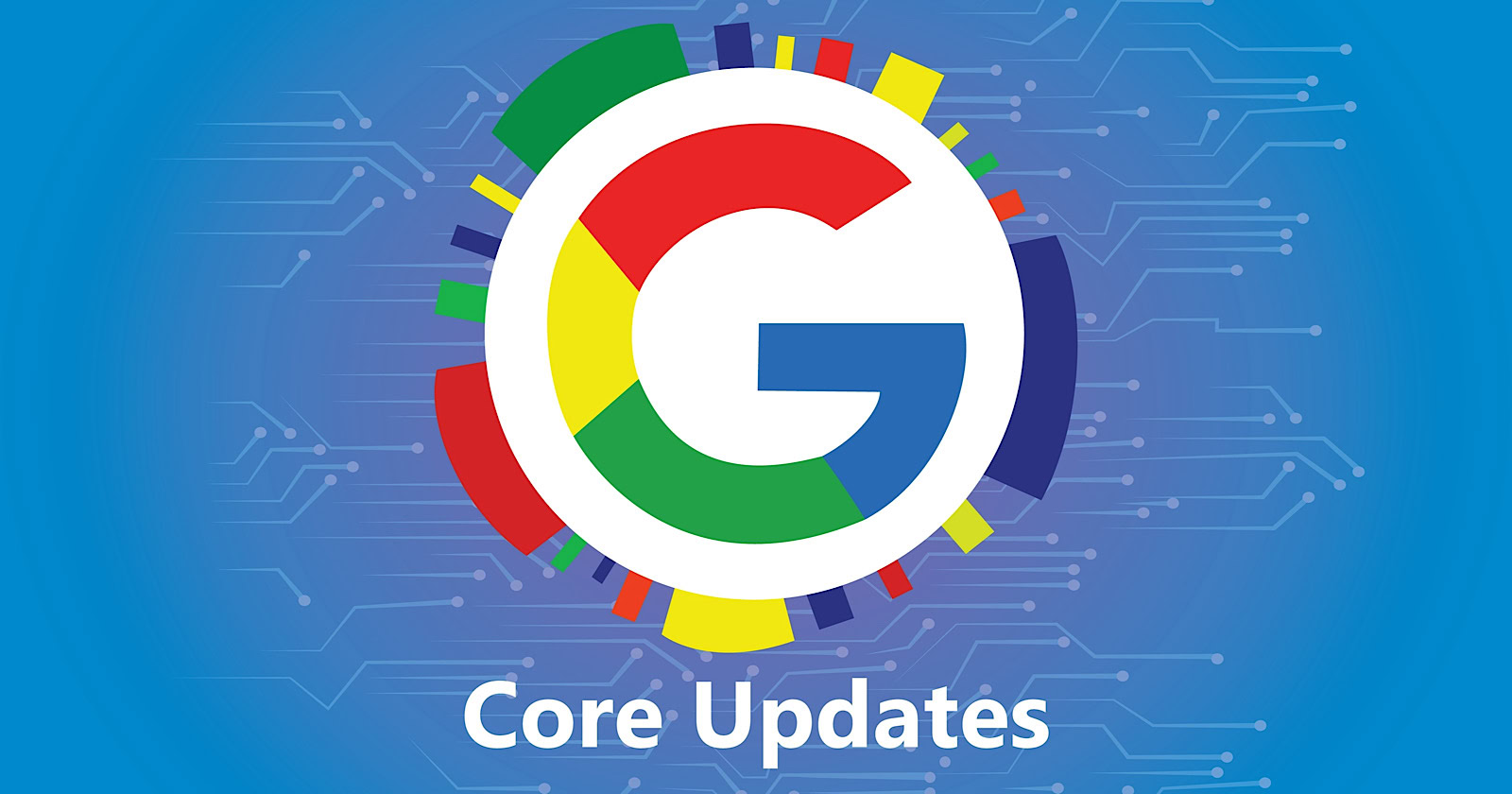SEO
How Impression-Based KPIs Drive Campaign Performance

Digital marketers can be our own worst enemies.
After years of touting that we can track everything and derive a precise ROAS from digital marketing, the expectation is that we can continue to do so.
And while it is true that digital marketing offers far greater opportunities for uncovering the ROI of specific tactics and channels, it sometimes feels like this trackability has overshadowed the impact of softer, top-of-the-funnel KPIs.
Don’t get me wrong.
Advertisers should still use metrics like ROAS, ROI and LTV/CAC (lifetime value/customer acquisition cost) as north star metrics when distributing budget across channels and tactics.
But building demand for tomorrow at the top of the funnel requires a different mindset which can make some marketers (and, let’s face it, their CFOs) uncomfortable.
The good news is that higher-funnel initiatives influence conversions down-funnel, and there are a variety of ways to measure it.
In this article, you will learn impression-based KPIs you need to know as well as native and paid tools you can use to measure impression influence.
The Challenge
The buying experience has undergone rapid change over the last decade, and marketers and leadership have not caught up to buying behaviors.
At the root of the problem lies the difference between buyer behavior and attribution.
Here’s why:
- Buyers are not on a linear path.
- Buying committees often drive decisions, not individuals (this is especially true for B2B). This means advertising has to reach multiple individuals on the path to a final purchase.
- Users are more savvy, skeptical, and inundated than ever before. Therefore, the frequency of viewing strong creative is critical to building awareness, interest, and consideration.
Meanwhile, company leadership often makes decisions on antiquated attribution models, like the last-click which ignores the very nature of buyer behavior.
So, how do you show the value of top-of-funnel advertising?
Conducting in-depth brand awareness studies is certainly an option for large advertisers.
But for smaller advertisers or those wanting to get a quick understanding of results, impression-based KPIs are a great way to optimize your top-of-funnel advertising.
Impression-Based KPIs To Know
If an impression is on the path to conversion, it has value.
Consider your own experiences.
How many times have you seen an ad influence a future decision?
You may not have clicked the ad.
It may have taken a day for you to act on it, but it clearly influenced your thinking.
Those advertisers weren’t able to precisely quantify the value that impression/view had, but they knew enough to know it was valuable.
Quantifying what that value is can be tricky.
But here are some key KPIs that should be included when evaluating the success of top-of-funnel advertising:
Lift In Brand Search Impression
Top-of-funnel (TOF) initiatives drive brand awareness, which creates search demand.
As a result, this is one of the best proxies of success for TOF initiatives
Engagement/click-through-rate
Brands that have more marketplace awareness who cleverly communicate their value proposition and differentiators see higher click-through rates.
A pre-TOF initiative/post-TOF initiative analysis of CTR will provide insights into whether your efforts are paying off.
Engaged View Conversions
On YouTube and Display (using video in the responsive ad unit), an engaged view conversion is counted when at least 10 seconds of a skippable in-stream ad is watched (or the whole thing if shorter than 10 seconds).
View-through Conversions
View-through conversions tell you that your ad was seen along the path to conversion, despite it not being clicked.
While not nearly as valuable as a click-based conversion, it still holds value when evaluating the performance of prospecting campaigns where a prospect has not yet engaged with you.
Audience Saturation
Reach, frequency, and audience saturation can be a great KPI if you have well-defined audiences.
Examples of defined, high-value audiences include customer match lists, pixel-based retargeting lists, Custom audiences using the Searched on Google setting and account-based-marketing (ABM) audiences.
This is less valuable of a metric with ambiguous targeting, such as similar tos and lookalikes or when using “optimized” targeting.
On search, impression share can provide you audience saturation insights.
Native Tools To Help You Measure Impression Influence
Attribution is hard. And messy.
No matter what a salesperson tells you, there is no one-size-fits-all solution for attribution — especially when you are trying to quantify impression-focused KPIs.
Breathe easy though.
Here are five ways to measure impact using native tools:
- Add relevant impression-focused metrics (above) to your platform views, internal dashboards and client reporting. For example, showcase when TOF initiatives lead to brand impressions surging higher.
- Run a geo holdout test activating TOF initiatives in select markets, but not in others. Then, evaluate impact based on market-level lead, pipeline and revenue data (including all traffic sources).
- Create a custom column that combines click-conversions and weighted view-through conversions to better understand the impact a keyword or audience segment has. Then, use that info to set target CPA bids.
- Utilize lift studies with Google and Facebook for a more automated way to learn more about the incremental impact of ads.
- Using Google Analytics user groups, create an “exposed” and “unexposed” group and serve retargeting ads to one group. Then, measure downstream KPIs to identify the impact of retargeting impressions.
Paid Tools To Measure Impression Influence
While other tools exist, I can directly speak to the Google Marketing Platform products. Both Google Analytics and Google Analytics 360 (GA360) provide buyer journey reporting under Attribution > Conversions > Top Conversion Paths.
However, GA360 includes Google-based impression activity in these paths.
Another GMP product, Campaign Manager 360 (CM360), provides impression data beyond the Google ecosystem.
Here, you can place impression tags on non-Google vendor URLs (eg. Twitter and Reddit) to get a more comprehensive look at how impressions influence the buying process.
This can be valuable information when media planning, because a TOF initiative may not get credit by solely examining click-based KPIs.
For example, we recently had a client observing poor lead performance on Reddit.
We were considering cutting it, but we looked at our CM360-fueled Tableau dashboard and saw that Reddit was actually the first brand exposure (without click) 41 times.
This data showed that while on the surface, there was no conversion activity associated with the channel, it was introducing people to the brand, who were later clicking on another CM360-tagged link, then converting.
Conclusion
An impression to the right audience has value.
If you want to build a future-proof marketing program, demand must be generated through TOF initiatives that value non-click conversion points.
While it is hard to quantify sometimes, there are multiple indicators you can use to help you determine whether the channel or tactic is effective.
In summary, you should:
- Determine your impression-centric KPIs and their values.
- Communicate (and align) with stakeholders on what success looks like throughout the funnel.
- Ensure your media mix, strategies and tactics are informed by said KPIs.
More resources:
Featured Image: H12/Shutterstock
SEO
Google March 2024 Core Update Officially Completed A Week Ago

Google has officially completed its March 2024 Core Update, ending over a month of ranking volatility across the web.
However, Google didn’t confirm the rollout’s conclusion on its data anomaly page until April 26—a whole week after the update was completed on April 19.
Many in the SEO community had been speculating for days about whether the turbulent update had wrapped up.
The delayed transparency exemplifies Google’s communication issues with publishers and the need for clarity during core updates
Google March 2024 Core Update Timeline & Status
First announced on March 5, the core algorithm update is complete as of April 19. It took 45 days to complete.
Unlike more routine core refreshes, Google warned this one was more complex.
Google’s documentation reads:
“As this is a complex update, the rollout may take up to a month. It’s likely there will be more fluctuations in rankings than with a regular core update, as different systems get fully updated and reinforce each other.”
The aftershocks were tangible, with some websites reporting losses of over 60% of their organic search traffic, according to data from industry observers.
The ripple effects also led to the deindexing of hundreds of sites that were allegedly violating Google’s guidelines.
Addressing Manipulation Attempts
In its official guidance, Google highlighted the criteria it looks for when targeting link spam and manipulation attempts:
- Creating “low-value content” purely to garner manipulative links and inflate rankings.
- Links intended to boost sites’ rankings artificially, including manipulative outgoing links.
- The “repurposing” of expired domains with radically different content to game search visibility.
The updated guidelines warn:
“Any links that are intended to manipulate rankings in Google Search results may be considered link spam. This includes any behavior that manipulates links to your site or outgoing links from your site.”
John Mueller, a Search Advocate at Google, responded to the turbulence by advising publishers not to make rash changes while the core update was ongoing.
However, he suggested sites could proactively fix issues like unnatural paid links.
“If you have noticed things that are worth improving on your site, I’d go ahead and get things done. The idea is not to make changes just for search engines, right? Your users will be happy if you can make things better even if search engines haven’t updated their view of your site yet.”
Emphasizing Quality Over Links
The core update made notable changes to how Google ranks websites.
Most significantly, Google reduced the importance of links in determining a website’s ranking.
In contrast to the description of links as “an important factor in determining relevancy,” Google’s updated spam policies stripped away the “important” designation, simply calling links “a factor.”
This change aligns with Google’s Gary Illyes’ statements that links aren’t among the top three most influential ranking signals.
Instead, Google is giving more weight to quality, credibility, and substantive content.
Consequently, long-running campaigns favoring low-quality link acquisition and keyword optimizations have been demoted.
With the update complete, SEOs and publishers are left to audit their strategies and websites to ensure alignment with Google’s new perspective on ranking.
Core Update Feedback
Google has opened a ranking feedback form related to this core update.
You can use this form until May 31 to provide feedback to Google’s Search team about any issues noticed after the core update.
While the feedback provided won’t be used to make changes for specific queries or websites, Google says it may help inform general improvements to its search ranking systems for future updates.
Google also updated its help documentation on “Debugging drops in Google Search traffic” to help people understand ranking changes after a core update.
Featured Image: Rohit-Tripathi/Shutterstock
FAQ
After the update, what steps should websites take to align with Google’s new ranking criteria?
After Google’s March 2024 Core Update, websites should:
- Improve the quality, trustworthiness, and depth of their website content.
- Stop heavily focusing on getting as many links as possible and prioritize relevant, high-quality links instead.
- Fix any shady or spam-like SEO tactics on their sites.
- Carefully review their SEO strategies to ensure they follow Google’s new guidelines.
SEO
Google Declares It The “Gemini Era” As Revenue Grows 15%

Alphabet Inc., Google’s parent company, announced its first quarter 2024 financial results today.
While Google reported double-digit growth in key revenue areas, the focus was on its AI developments, dubbed the “Gemini era” by CEO Sundar Pichai.
The Numbers: 15% Revenue Growth, Operating Margins Expand
Alphabet reported Q1 revenues of $80.5 billion, a 15% increase year-over-year, exceeding Wall Street’s projections.
Net income was $23.7 billion, with diluted earnings per share of $1.89. Operating margins expanded to 32%, up from 25% in the prior year.
Ruth Porat, Alphabet’s President and CFO, stated:
“Our strong financial results reflect revenue strength across the company and ongoing efforts to durably reengineer our cost base.”
Google’s core advertising units, such as Search and YouTube, drove growth. Google advertising revenues hit $61.7 billion for the quarter.
The Cloud division also maintained momentum, with revenues of $9.6 billion, up 28% year-over-year.
Pichai highlighted that YouTube and Cloud are expected to exit 2024 at a combined $100 billion annual revenue run rate.
Generative AI Integration in Search
Google experimented with AI-powered features in Search Labs before recently introducing AI overviews into the main search results page.
Regarding the gradual rollout, Pichai states:
“We are being measured in how we do this, focusing on areas where gen AI can improve the Search experience, while also prioritizing traffic to websites and merchants.”
Pichai reports that Google’s generative AI features have answered over a billion queries already:
“We’ve already served billions of queries with our generative AI features. It’s enabling people to access new information, to ask questions in new ways, and to ask more complex questions.”
Google reports increased Search usage and user satisfaction among those interacting with the new AI overview results.
The company also highlighted its “Circle to Search” feature on Android, which allows users to circle objects on their screen or in videos to get instant AI-powered answers via Google Lens.
Reorganizing For The “Gemini Era”
As part of the AI roadmap, Alphabet is consolidating all teams building AI models under the Google DeepMind umbrella.
Pichai revealed that, through hardware and software improvements, the company has reduced machine costs associated with its generative AI search results by 80% over the past year.
He states:
“Our data centers are some of the most high-performing, secure, reliable and efficient in the world. We’ve developed new AI models and algorithms that are more than one hundred times more efficient than they were 18 months ago.
How Will Google Make Money With AI?
Alphabet sees opportunities to monetize AI through its advertising products, Cloud offerings, and subscription services.
Google is integrating Gemini into ad products like Performance Max. The company’s Cloud division is bringing “the best of Google AI” to enterprise customers worldwide.
Google One, the company’s subscription service, surpassed 100 million paid subscribers in Q1 and introduced a new premium plan featuring advanced generative AI capabilities powered by Gemini models.
Future Outlook
Pichai outlined six key advantages positioning Alphabet to lead the “next wave of AI innovation”:
- Research leadership in AI breakthroughs like the multimodal Gemini model
- Robust AI infrastructure and custom TPU chips
- Integrating generative AI into Search to enhance the user experience
- A global product footprint reaching billions
- Streamlined teams and improved execution velocity
- Multiple revenue streams to monetize AI through advertising and cloud
With upcoming events like Google I/O and Google Marketing Live, the company is expected to share further updates on its AI initiatives and product roadmap.
Featured Image: Sergei Elagin/Shutterstock
SEO
brightonSEO Live Blog

Hello everyone. It’s April again, so I’m back in Brighton for another two days of Being the introvert I am, my idea of fun isn’t hanging around our booth all day explaining we’ve run out of t-shirts (seriously, you need to be fast if you want swag!). So I decided to do something useful and live-blog the event instead.
Follow below for talk takeaways and (very) mildly humorous commentary. sun, sea, and SEO!
-
SEARCHENGINES7 days ago
Daily Search Forum Recap: April 19, 2024
-

 WORDPRESS7 days ago
WORDPRESS7 days ago7 Best WooCommerce Points and Rewards Plugins (Free & Paid)
-

 WORDPRESS6 days ago
WORDPRESS6 days ago13 Best HubSpot Alternatives for 2024 (Free + Paid)
-

 MARKETING7 days ago
MARKETING7 days agoBattling for Attention in the 2024 Election Year Media Frenzy
-

 MARKETING6 days ago
MARKETING6 days agoAdvertising in local markets: A playbook for success
-

 SEO7 days ago
SEO7 days agoGoogle Answers Whether Having Two Sites Affects Rankings
-

 SEARCHENGINES6 days ago
SEARCHENGINES6 days agoGoogle Core Update Flux, AdSense Ad Intent, California Link Tax & More
-

 AFFILIATE MARKETING6 days ago
AFFILIATE MARKETING6 days agoGrab Microsoft Project Professional 2021 for $20 During This Flash Sale
















You must be logged in to post a comment Login